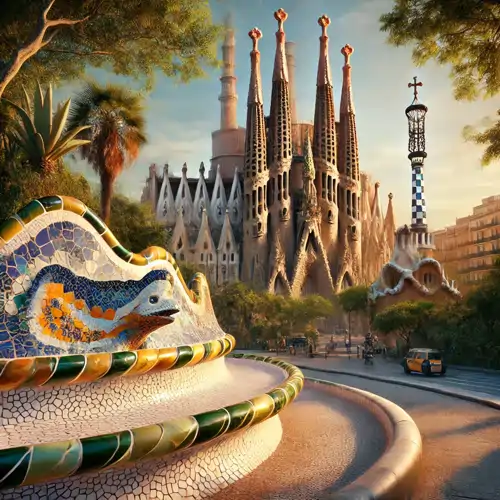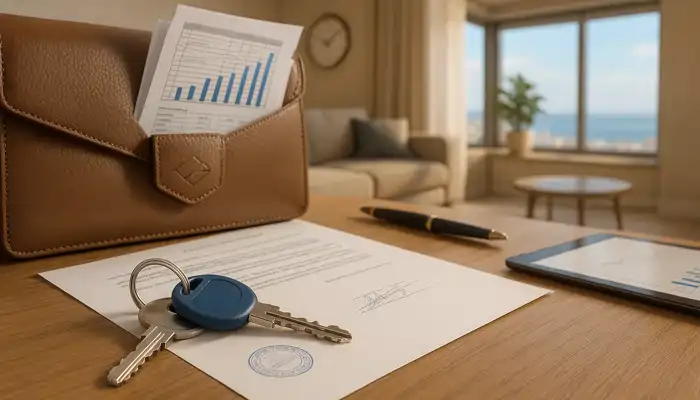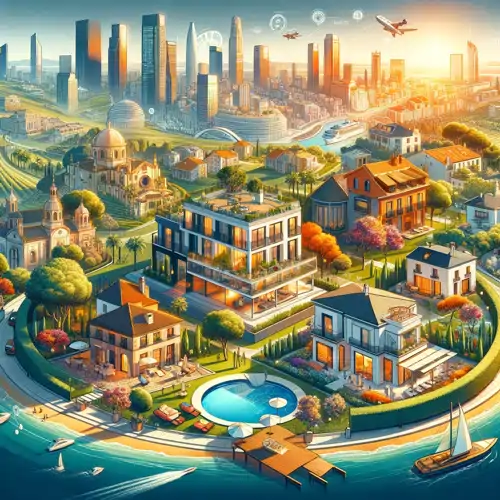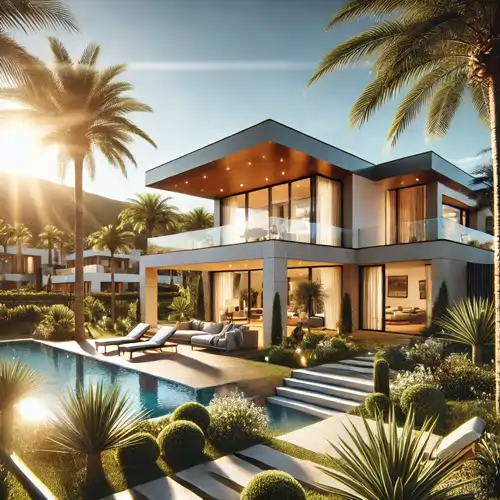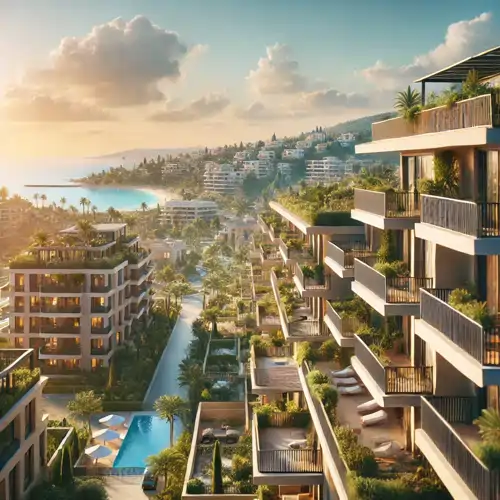Barcelona today is a city where history, culture, and architecture merge into a unique whole. One of the main factors that have given the city its distinctive appearance is the work of Antoni Gaudí, an architect whose creations have become symbols of modernism. For a tourist planning a visit to Barcelona, the most relevant pain points are information overload, difficulty in choosing places to visit, high ticket prices, and long waiting times. This article aims to answer these questions, structure the information about Gaudí's main masterpieces, and offer practical tips for a comfortable trip.
Main Tourist Problems and How to Solve Them
Many visitors face difficulties when planning their route:
- Information overload and a wide variety of options;
- Inefficient time distribution due to long queues;
- High cost of tickets to popular attractions;
- Logistical difficulties in moving between locations.
The solution to these problems lies in careful trip planning, advance ticket booking, and choosing optimal times to visit the sites (for example, early morning hours when the flow of tourists is minimal). This approach helps reduce stress and make the visit as comfortable as possible.
History of Gaudí's Work and His Architectural Philosophy
Antoni Gaudí (born in 1852) became one of the most prominent representatives of Catalan modernism. His works are characterized by the use of natural forms, organic lines, and asymmetrical elements, which distinguish his style from classical architectural solutions. Gaudí sought to create harmony between the building and the surrounding nature, using innovative methods and materials. This approach made his works not only aesthetically appealing but also functional, and studying them allows for a better understanding of the development of modern architecture.
Main Works of Gaudí's Legacy in Barcelona
Sagrada Família
Sagrada Família (Basilica of the Holy Family) is Gaudí's main and most ambitious project, whose construction began in 1882 and continues to this day. The project is funded through private donations, reflecting the high level of commitment from the city's residents and admirers of his work. Ticket prices vary: the standard entry starts at 26 euros, while access to the towers requires an additional fee. The number of spots for climbing is limited, so it is recommended to book tickets in advance.
Casa Batlló
Casa Batlló, known as the "House of Bones," is a striking example of the creative reinterpretation of residential space. The building's reconstruction was carried out by Gaudí in 1904 at the request of textile magnate Josep Batlló i Casanovas. The façade of the house is distinguished by its wavy lines and original use of color and light, while the interior impresses with intricate sculptural elements and colorful mosaics. Visiting this site allows one to see how Gaudí transformed an ordinary house into a work of architectural art.
La Pedrera (Casa Milà)
La Pedrera, also known as Casa Milà, is one of Gaudí's most recognizable projects. Its façade with wavy lines and unconventional shapes creates a sense of movement and life. The interior space is organized to emphasize the naturalness of forms and the innovative approach to room layout. Visiting the rooftop, where the characteristic chimneys are located, allows one to appreciate the boldness of the architectural solutions. The entry price starts at around 14 euros, making this site accessible to a wide audience.
Park Güell
Park Güell, an architectural complex created for businessman Eusebi Güell, combines natural landscape with artistic solutions. Among its main features are the mosaic benches, whimsical structures, and the famous dragon fountain. Despite its popularity, entry to the park is usually free, while access to the museum inside the park costs around 5 euros. It is recommended to visit the park in the morning to avoid crowds and enjoy its unique atmosphere.
Casa Vicens
Casa Vicens, Gaudí's first major project in Barcelona, was built for manufacturer Manuel Vicens and showcases the architect's early experiments with the use of colorful tiles and oriental motifs. Elements of Arabic architecture are evident in all details, making this house a unique example of the transitional period in Gaudí's work. This site is of interest to those who wish to see the origins of the great master's style.
Palau Güell
Palau Güell was built at the request of industrialist Eusebi Güell between 1886 and 1888 and is one of Gaudí's earliest projects. The building is distinguished by its intricate organization of interior space, original iron gates, and richly decorated interiors. Here, one can see the first steps in the development of the modernist style, allowing for an evaluation of the evolution of Gaudí's architectural solutions.
Analysis of Pricing Policy and Visit Logistics
One of the main problems for tourists is the cost of tickets and the need to book in advance. For example, at the Sagrada Família, the standard ticket price is around 26 euros, while access to the towers incurs an additional cost. At Casa Batlló and La Pedrera, ticket prices range from 14 to 29 euros, and the price may vary depending on the time of day and visitor traffic. Park Güell offers free entry to its main area, making it attractive for budget-conscious tourists.
The logistics of the visit also require attention. Barcelona has a developed public transport system, but during peak hours, popular routes can be crowded. To reduce waiting times, it is recommended to plan visits in advance, use online services to book tickets, and choose less crowded times, such as early morning.
Tips for Planning Your Visit
To make the most of your time and budget, tourists should follow these practical recommendations:
- Book online. Many sites allow you to book tickets in advance, avoiding long queues.
- Visit in the morning. Visiting popular sites early helps avoid crowds and ensures a more comfortable experience.
- Flexible route. Planning a detailed route, taking into account the opening hours of the sites and possible discounts, helps optimize your itinerary.
- Research in advance. Familiarizing yourself with the history and features of each site allows you to choose the most interesting places and plan your time to avoid missing important details.
These measures help reduce costs and time, as well as make visiting the attractions more comfortable.
Influence of Gaudí's Legacy on Modern Architecture
Gaudí's work has had a significant impact on the development of modern architecture, not only in Barcelona but worldwide. His innovative approach to space creation, the use of asymmetry, and organic lines have inspired an entire generation of architects. Many contemporary projects incorporate the principles established by Gaudí, making his legacy relevant to this day.
Additionally, Gaudí's works are an important part of cultural tourism. The status of the sites included in the UNESCO (United Nations Educational, Scientific and Cultural Organization) World Heritage List reflects their unique value and the need to preserve them for future generations.
Conclusions and Recommendations
The analysis of the presented sites shows that Gaudí's architectural legacy is a key factor defining Barcelona's cultural appearance. Careful route planning, the use of online services for ticket booking, and choosing optimal visiting times help solve the main problems faced by tourists. By studying the history of each site, one can understand the evolution of the architectural style and appreciate the innovative solutions proposed by Gaudí.
Therefore, to gain a comprehensive understanding of the great architect's work, it is recommended to visit the main landmarks: the Sagrada Família, Casa Batlló, La Pedrera, Park Güell, Casa Vicens, and Palau Güell. Each of these places not only showcases unique architectural solutions but also allows one to immerse themselves in the history of the development of modernism in architecture. Proper organization of the visit contributes to obtaining quality information and a comfortable experience during the trip.
Conclusion
The architectural legacy of Antoni Gaudí continues to have a significant impact on Barcelona's appearance and the development of modern tourism. A well-structured visiting program, adapted to the real needs of tourists, helps solve the main problems: high costs, queues, and logistical difficulties. A detailed study of the history of each site and an understanding of its cultural context make the trip not only informative but also economically beneficial.
For those who want to get the most information and enjoy the experience to the fullest, it is important to prepare in advance, familiarize yourself with the features of each work, and plan a flexible route. This approach will allow each visitor not only to enjoy Gaudí's unique architectural solutions but also to better understand the historical processes that have shaped modern Barcelona.
